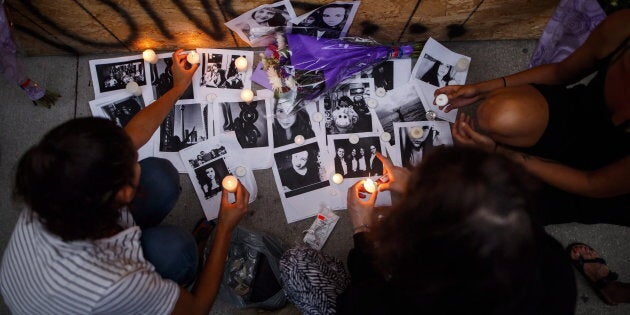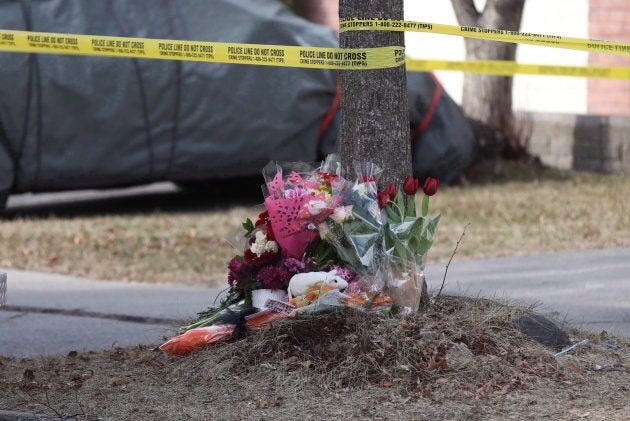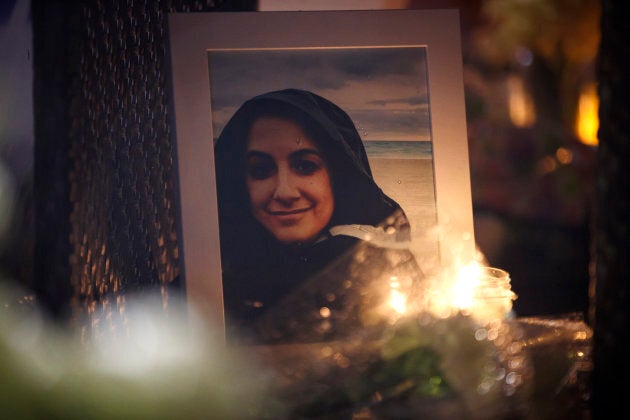
TORONTO — Four years after police found her generous, loving aunt Patricia "Patsy" Lewis allegedly murdered in her Guelph, Ont. home, her niece Connie Marangwanda says she cannot shake the feeling that more could have been done to protect her.
Last November, Lewis's son, Lawrence Kemp, was charged with second-degree murder of the 61-year-old, Guelph police say. Kemp was originally arrested shortly after Lewis's death in September 2014, for an unrelated matter and then released. The case is now before the courts.
Marangwanda, a social worker and the family's spokesperson, has long maintained Lewis was a victim of domestic violence, and doubts that police or society as a whole is doing enough to protect victims.

"As women, we're vigilant about our safety. We're trained to be aware of our safety in terms of strangers, but really it's not about that. It's about the people we know," Marangwanda told HuffPost Canada in an interview.
"Think of all the women out there being abused and controlled in their own home that we don't even know about it. These women are not getting help and society tends to judge them, instead of supporting them."
A female is killed every two and a half days in Canada, a statistic that has remained largely the same for 40 years, according to the first annual report on national femicide rates released Wednesday.
University of Guelph researchers found in 2018 there were at least 148 cases of women and girls killed by violence. Many of these are considered femicides, defined as the killing of women and girls primarily by men because of the "continuing patriarchal structures that have persisted for decades," said Prof. Myrna Dawson, head of the Canadian Femicide Observatory for Justice and Accountability, which compiled the data.

The number of femicides in Canada is a "minimum estimate" because some cases have not yet been labelled as homicides, or reported to the media, and are therefore not included, says the report.
Half of the female victims were killed in their home, the researchers found. Twenty-seven per cent were between the ages of 25 and 34, and another 27 per cent were 55 and older.
In 88 per cent of cases, the victims knew the accused as a current or former partner, family member, friend or acquaintance, the report says.
Similar trends are experienced worldwide, said Dawson, whose research was in response to a call by the United Nations to better track femicides worldwide.
"Monitoring the situation over the last year, we were very much impacted in real time," Dawson said. "We would get up every other day and face another case of a woman or girl being killed."
Story continues below
Nunavut has the highest rate of murders of women and girls, followed by Yukon, New Brunswick and Manitoba, researchers found. The lowest rate was in Quebec. Indigenous women and girls made up 36 per cent of homicides, but comprise about only five per cent of Canada's population.
The team tracked media reports of potential femicides, and monitored government, legal and social responses to the crimes, and is in the process of compiling data for 2016 and 2017, the report says. The goal is to describe femicide trends and patterns over time, compare characteristics and circumstances surrounding femicides and identify themes for future research.
And to remember the victims.
The report includes the names of the women and girls killed by violence in 2018, ranging in age from 10 to 94, including the eight women who died in the Yonge Street van attack.

Marangwanda remembers Lewis as a funny, hardworking woman who spoke her mind and was proud of her going into social work.
Around Lewis's birthday, and the anniversary of her death, Marangwanda used to ramp up her calls to police, asking if any progress had been made in their investigation. Now she calls for court updates, and her female family members to keep Lewis's memory alive.
"She could've gotten help. Society failed her," Marangwanda said.
Guelph police did not respond to requests for comment.